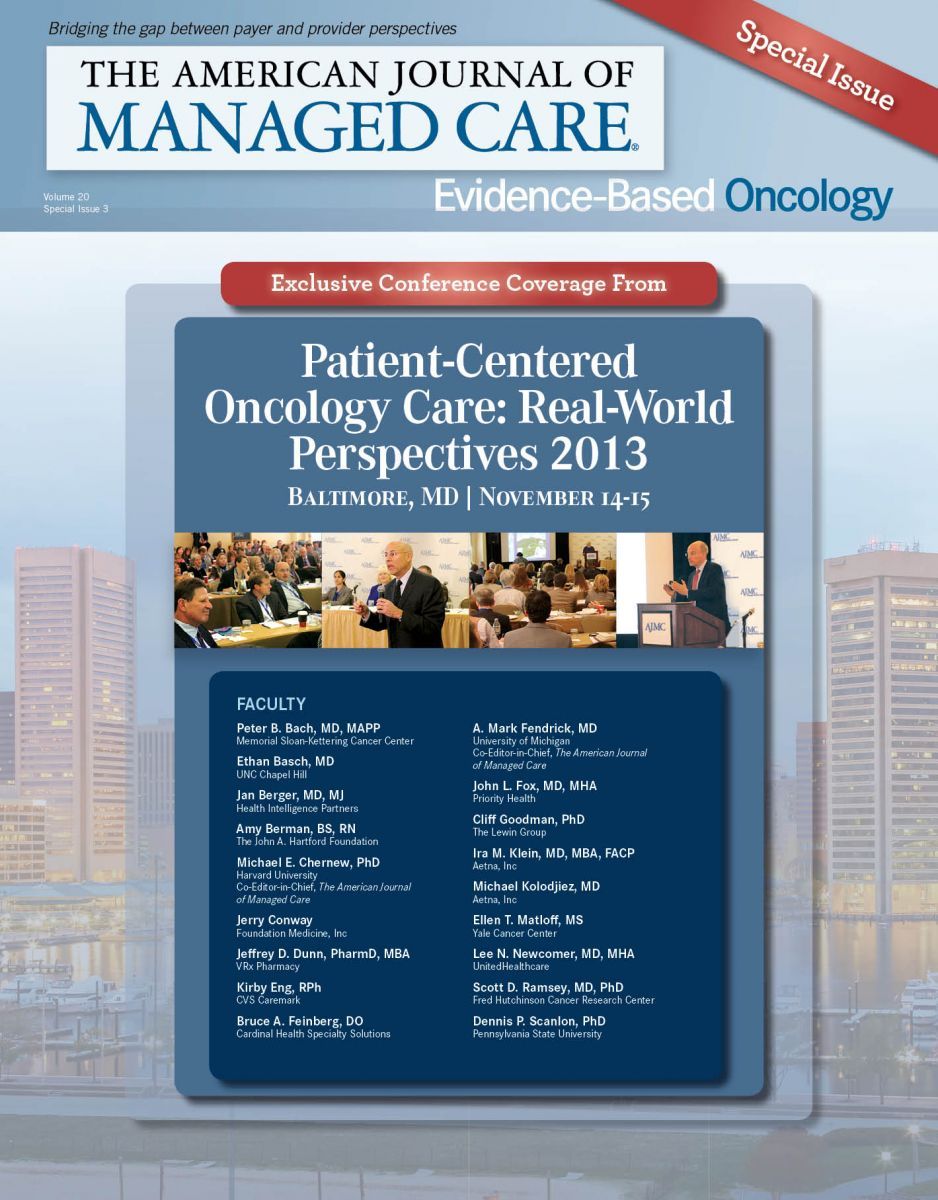Publication
Article
Evidence-Based Oncology
Will Shifts in Oncology Outpatient Points of Care Lead to More Profits or Savings?
Author(s):
To begin the session entitled Oncology Practice in the Era of PCMHs and ACOs: Square Pegs or Round Holes?, Peter B. Bach, MD, MAPP, outlined how new payment models are changing the settings of oncology practice.
To begin the session entitled “Oncology Practice in the Era of PCMHs and ACOs: Square Pegs or Round Holes?”, Peter B. Bach, MD, MAPP, outlined how new payment models are changing the settings of oncology practice. High drug costs and shifting reimbursement trends have pushed patients out of community settings and into hospitals. Rather than lament this shift, Bach suggests hospitals should be targeted for savings.
Alterations in risk and incentives that have accompanied the healthcare system’s move away from fee-for-service have had some unintended consequences. This can compromise the ability for stakeholders to achieve the goals intended by the reform, but can also create opportunities for new payment models to emerge, for care to improve, and for savings to be achieved, according to Peter B. Bach, MD, MAPP, director, Center for HealthPolicy and Outcomes, Memorial Sloan-Kettering. Bach pointed out the shrinking network of community oncology outpatient care clinics, which has led to consolidations, hospital agreements, and acquisitions. As the provider networks grow, various risk scenarios are being explored that include care management fees, bundled payments, capitated risk, and integrated delivery through accountable care organizations (ACOs).
Bach noted that, although he believes bundled payments offer the best opportunities for savings and improved care, the marketplace may not be ready for this. Most stakeholders are more comfortable with a shared savings environment similar to what is seen in ACOs. In oncology, the trend is to try to achieve savings outside of the drugs. The data so far suggest that care through a patient-centered medical home (PCMH) can result in reduced hospitalizations and overall cost reductions. However, it remains to be seen whether these reductions can besustained over time. “There’s a lot of money spent on hospitalizations, a lot of money spent on imaging, advanced testing,” he stated. Practicing physicians are in a position to redesign care and reduce these costs.
The consolidation has led to larger provider networks, such as hospitals, being in a better position to take on more risk, Bach said. “I think the general trend is to move risk, and to move it to the place where the discretionary decisions are made,” he added. At the same time, the larger networks are also “garnering strong negotiating leverage with payers.”
“So, this consolidation cuts both ways,” Bach said. “They’re ready to take on risk, but they’re also getting to a point where they could be one of the few providers in the area, which allows them to extract much higher rates.”
He presented data showing that the median introductory price for new oncology drugs has increased from about $100 per month in 1970 to about $10,000 per month in 2010. Due in part to the collapsing margins at the physician level, there has been a shift at the point of care from the physician office to the hospital outpatient department. “By site of service, there’s a very strong trend. We used to say 80% of care was delivered in the community. It’s now more proper probably to say it’s about 60%,” Bach said. This shift has been driven by the 340B drug discounts that allow hospitals to pay approximately 40% less than physician offices. The program was originally designed to target underserved populations, but about one-third of hospitals qualify for the discounts. “It’s for outpatient drugs in the hospital, so only the hospitals can benefit from this through their outpatient departments, and this has caused a huge distortion in the marketplace.”
The common belief is that cancer care costs more in the hospital outpatient setting than at the physician office. Bach pointed out that this is based on historic data. Also, the data are not adequately adjusted to reflect discounts or how sick the patients are. The increased purchasing power of the hospitals translates to more opportunities for savings. “So, we can look at the physician office and say OK, those margins are squeezed, people are going out of business. These hospitals have balance sheets and they’re getting fantastic reimbursement,” Bach said. “So,
EBO
they’re exactly the ones to target for (savings).”


